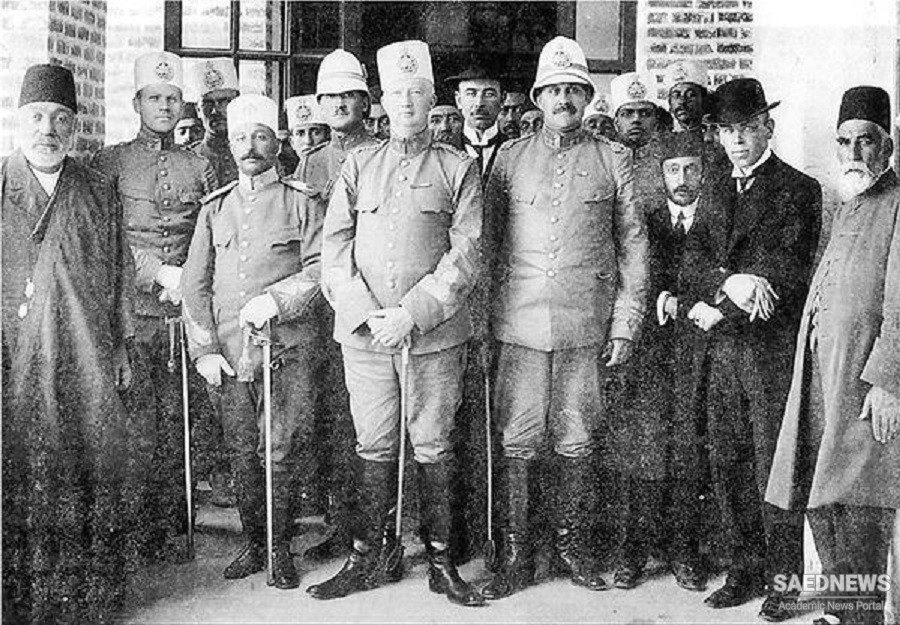The accounts written by some of these officers reflect their travels in northwestern and northeastern Iran and give detailed results of the study they made of the routes: the terrain, possibilities of water and food supplies, inhabited areas, the attitude of the population towards the Russians. They also outline the most convenient routes for Russian military operations. The construction of roads and railroads in Iran and border areas belonging to Russia, such as Turkmenia, was closely connected with Russian military goals. Some of the authors only imply that their missions had a military purpose, others talk about Russian military plans in a straightforward way. Several of them express their confidence in support or at least non-resistance of the local people if the Russians attack Iran. As noted above, their published reports do not extend to the more complete picture sent to headquarters.
While describing the routes between Ashgabat and Mashhad, Colonel Iu. D. Mel’nitskii (General Staff) discusses the adapting of the road for “moving [Russian] artillery;” the main roads to be used “in case of our advance into Khorasan;” and the Kurdish population, which “will not present strong resistance to our advance into Khorasan.” Captain Leonid Artamonov (General Staff) lists northern Azerbaijan among the areas potentially attractive as objects of a Russian military takeover; for example, he explains how it would be easier to capture three cities he saw which were supposed to be fortified: Tabriz, Ardebil and Khoi. He even includes a sketch of the barracks of the Iranian soldiers in Tabriz. His other accounts are devoted to on-the-ground military reconnaissance of the Caspian coast and northern Khorasan.
Captain V. Oranovskii (General Staff) gives a “military and statistical” description of northeastern Khorasan and tells his readers what he perceives as necessary measures “when we advance into Khorasan,” for example: If the population of [Mashhad] and its higher ‘ulama try to resist our army, bombardment of the city would be enough to make it surrender, taking into account the density of buildings and population; most likely it will not be necessary to take the city by storm.
Lieutenant Bel’gard studied routes from the Caspian Sea to Tehran. Among other things, he sums up the results of his work concerning the roads between Chalus and Tehran and indicates the seasons when the roads can be used, as well as the shortest and best roads to be taken by the Russian cavalry, infantry and artillery. According to his article, “the population, timid by nature and oppressed by taxation, will not put up any resistance to the advancing [Russian] army.” His conclusions concerning “the military significance of this route” include the following advantages: It’s short (3 days’ march for the cavalry and 6 days’ march for the infantry) . . . There are no telegraph lines along the road or nearby, which gives a [military] group the opportunity to appear at the walls of Tehran without warning . . . In the event of our advance into Persia, from whatever direction the main forces are sent, the dispatch of a mobile group about the size of a cavalry brigade with a battery of mountain artillery along the route under observation has numerous advantages. The mere news of the appearance of such a group at the walls of Tehran will have an incredible effect and will create panic in Persia . . . Inside the city such unimaginable chaos will ensue that it will force the rulers of Persia to agree to all the Russian government demands.
Captain P. Tomilov (General Staff), who reported on the conditions of the roads in Iran including those between Tehran and Qazvin, Tehran and Esfahan, Esfahan and Shushtar, Shiraz and Bushehr, and the route from the Karun River to Tehran, often refers to the possibility that his descriptions of the routes will be used in the case of an advance by Russian troops. Captain Lomakin mentions in passing, as a thing decided on, the possibility of a Russian advance into Khorasan. Lieutenant Karl Von Baumgarten makes observations about the potential military accessibility of the routes he traveled in eastern Iran. S. Babich, a military officer, refers to northern Iran as an area where “we will probably have to take action in future.” He also assesses the roads in Azerbaijan from the point of view of their being accessible for mountain artillery. Other important authors whose travels in northern and northeastern Iran as reflected in their accounts have clear military purposes are Lieutenant-Colonel I. Strel’bitskii and Colonel (General Staff) Anastasii Benderev. They often mention the possibility that Russia will advance into Iranian territories.


 Colonial Warfare
Colonial Warfare














































